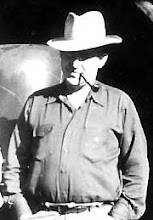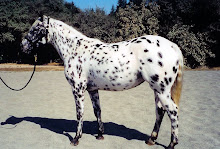For the past year, I have been feeling slightly guilty because I was not making compost with my garbage scraps. Little did I know that a compost pile could kill my two beautiful long-haired Chihuahuas. Last week, a friend of mine almost lost her beloved big dog when it got into a neighbors yard and ate compost. Apparently, compost breeds some kind of poisonous mold as it decomposes. Who woulda thunk it? If I do get around to composting, I will put it in a container.
So many times our good intentions and actions hold one of those infamous unintended consequences. Another example of these tricks of nature occurred in the seventies when so many people built their homes and other buildings with large glass windows and stone. As a school psychologist,I used to serve a school built with these "odes to nature". Now, I realize it must cost a fortune to keep the students warm in the winter, wasting our precious resources.
Another interesting and frightening innovation was building schools in non-traditional patterns. No longer built in predictable sequencing, I used to get lost trying to find a given classroom. God help the students or teachers if a medical emergency occurred.
Copyright 2009 Sharon Porter Moxley
Saturday, February 28, 2009
Wednesday, February 25, 2009
Woman Killed by Tree
During a big windy storm last week a woman was killed by a falling tree. She was reported as a lover of nature. This terrible accident reminds me of my mother's warnings about walking in the woods on a windy day. This caution was common knowledge in both Bull Creek and Whitethorn where loggers knew the ways of the weather and the woods. It was said that even a small branch falling from a tall tree could kill a person if it landed on their unfortunate head. When my mother, Ruby Doers walked through the woods with me she often pointed to broken branches hanging high in certain trees and told me they were called "widow makers."
Copyright 2009 Sharon Porter Moxley
Copyright 2009 Sharon Porter Moxley
Monday, February 23, 2009
History of Humboldt County
Today I am updating this bit about my blog, Whitethorn Kid Logger Journal.
I was born in Eureka in 1939. I moved to Bull Creek in the second grade.(wiped out in the floods of 1955 and 1964) Most of my childhood was spent in Whitethorn, Humboldt County, California. My blog centers around my days in Whitethorn. From time to time I write about other parts of Humboldt County and current events or opinions.
My blog describes people and events in Whitethorn during the years 1946-1951. My stepfather, Al Sharpe, owned the Whitethorn Lumber Company and the Whitethorn Bar as well as 700 acres of whitethorn brush, poison oak, tan oak, madrone, fir, bay and 2 wonderful acres of old growth redwoods he saved behind our house.
The blog is historically accurate and it names and describes people who lived in Humboldt County.
Copyright 2009 Sharon Porter Moxley
I was born in Eureka in 1939. I moved to Bull Creek in the second grade.(wiped out in the floods of 1955 and 1964) Most of my childhood was spent in Whitethorn, Humboldt County, California. My blog centers around my days in Whitethorn. From time to time I write about other parts of Humboldt County and current events or opinions.
My blog describes people and events in Whitethorn during the years 1946-1951. My stepfather, Al Sharpe, owned the Whitethorn Lumber Company and the Whitethorn Bar as well as 700 acres of whitethorn brush, poison oak, tan oak, madrone, fir, bay and 2 wonderful acres of old growth redwoods he saved behind our house.
The blog is historically accurate and it names and describes people who lived in Humboldt County.
Copyright 2009 Sharon Porter Moxley
Sunday, February 22, 2009
Rain
The much needed rain is pounding away here in Santa Rosa, California. It's a good storm, giving us an inch or more a day. It reminds me of the the way it rained in Whitethorn. Once a storm started you would count on it lasting for days or even weeks. And what a show it delivered. Great sheets of rain would swaggered across the valley like silver soldiers marching in a grand parade.
Copyright 2009 Sharon Porter Moxley
Copyright 2009 Sharon Porter Moxley
Friday, February 20, 2009
Ruby Doers Obituary
The following is the obituary of my mother, written by her grand daughter, Marilyn Sue Moxley. She lived in Whitethorn and Bull Creek for many years before moving to Sonoma County, California.
Obituary
Ruby E. Roberts (Doers) passed away at home on October 13, 2006, surrounded by her loving family. She was 90. Born in Wisconsin, she came to California at the age of 9. Previously she resided in Santa Rosa and has lived in Clearlake for the past 20 years. During World War II, she worked as a welder on the first floating dry dock in Eureka. From 1959 to 1979, she was a psychiatric technician at Sonoma Developmental Center. For years she remarked how she missed working with her disabled clients. She was an avid reader of books, especially suspense and mystery novels. She was a champion crossword puzzler, wonderful cook, and loved to garden. She also loved to play bingo. Whenever she won a pot, she would always spend her winnings on her family. She was also a good friend to her family, a lot of fun, easy going, a good listener, and very wise. She’ll be forever missed and in our hearts. She is survived by her two daughters, Sharon Moxley and Karen Sharpe; her grandchildren Marilyn, Antoinette, Jessica, Nicole, and Mariah; great grandchildren Melissa, Monica, Megan, Erin, and a little girl on the way; niece Pam Muellor and her children Mike and Jennifer; nephew Jerry Croy; great niece Teresa and great nephew Guy. Funeral services will be held…
Obituary
Ruby E. Roberts (Doers) passed away at home on October 13, 2006, surrounded by her loving family. She was 90. Born in Wisconsin, she came to California at the age of 9. Previously she resided in Santa Rosa and has lived in Clearlake for the past 20 years. During World War II, she worked as a welder on the first floating dry dock in Eureka. From 1959 to 1979, she was a psychiatric technician at Sonoma Developmental Center. For years she remarked how she missed working with her disabled clients. She was an avid reader of books, especially suspense and mystery novels. She was a champion crossword puzzler, wonderful cook, and loved to garden. She also loved to play bingo. Whenever she won a pot, she would always spend her winnings on her family. She was also a good friend to her family, a lot of fun, easy going, a good listener, and very wise. She’ll be forever missed and in our hearts. She is survived by her two daughters, Sharon Moxley and Karen Sharpe; her grandchildren Marilyn, Antoinette, Jessica, Nicole, and Mariah; great grandchildren Melissa, Monica, Megan, Erin, and a little girl on the way; niece Pam Muellor and her children Mike and Jennifer; nephew Jerry Croy; great niece Teresa and great nephew Guy. Funeral services will be held…
Wednesday, February 18, 2009
Axmen
I see that there is a series on TV about men cutting down trees. I have yet to view it but I plan on seeing it in the near future.
During the past four years, while writing my book about my childhood in Whitethorn, I have periodically done research on loggers and lumberjacks. Early on I found little written about their work. Now that they are a dying breed, it seems they have caught the attention of the public.
Copyright 2009 Sharon Porter Moxley
During the past four years, while writing my book about my childhood in Whitethorn, I have periodically done research on loggers and lumberjacks. Early on I found little written about their work. Now that they are a dying breed, it seems they have caught the attention of the public.
Copyright 2009 Sharon Porter Moxley
Monday, February 16, 2009
Undercut Answer
When a logger cut down a tree, he used and undercut to insure that the tree fell in a certain path. In Whitethorn, I remember hearing some old loggers brag they could lay down a tree exactly where they wanted it to land. Usually, they aimed for a spot between standing trees so there was no damage to the other trees making them less fit lumber. The undercut was a wedge shaped cut placed several inches deep on the other side of the tree where the logger was sawing. Without an undercut the tree could fall in any direction including on top of the busy logger.
If you want to view an example of an undercut go to Logging etool: making the cuts
Copyright 2009 Sharon Porter Moxley
If you want to view an example of an undercut go to Logging etool: making the cuts
Copyright 2009 Sharon Porter Moxley
Friday, February 13, 2009
Question of the Day
What is an undercut? Hint: Loggers did it. It often saved their lives.
Copyright 2009 Sharon Porter Moxley
Copyright 2009 Sharon Porter Moxley
Thursday, February 12, 2009
Sunday, February 8, 2009
Jamestown Settlement
As most of you readers know, I have been researching my ancesters on Ancestry.com. I have another surprise for you. I am a direct descendent of several settler's of Jamestown, Virginia. One of my ancestors, Richard Pace helped save many of the Jamestown people by warning them about the impending Indian Attack of 1622. Richard had adopted an indian boy who told him about the indian's plan. Although many settlers lost their lives in the raid, including a few of my ancestor cousins, many more would have died if Richard had not warned them.
I am currently reading Jamestown, The Buried Truth, by William M. Kelso. Very interesting book about the archaeologists who dug up the town around 1995. They found many artifacts from the settlement and they even did face reconstruction on a few of the skulls of the dead settlers. No, they didn't reconstruct Richard Pace's face. Darn it.
I am currently reading Jamestown, The Buried Truth, by William M. Kelso. Very interesting book about the archaeologists who dug up the town around 1995. They found many artifacts from the settlement and they even did face reconstruction on a few of the skulls of the dead settlers. No, they didn't reconstruct Richard Pace's face. Darn it.
Saturday, February 7, 2009
Loggers and Lumberjacks
These days most people use the names loggers and lumberjacks interchangeably. However, in Whitethorn we used to call men loggers when their job involved cutting down trees. Men who worked in a sawmill, where the logs were cut into boards, were called lumberjacks. Whatever the case may be, a waitress in Eureka recently told me they were both "dying breeds" because of the tree sitters. She didn't sound happy about it.
Friday, February 6, 2009
Peanut Recall
This past week I have been proudly eating trail mix and oranges for breakfast. I thought I was eating a healthy meal. Now I discover whole peanuts might be contaminated and I have peanuts in my trail mix. Darn!
I was so lucky to grow up in Bull Creek and Whitethorn. The air was so clean it was almost holy and I picked wild berries and nuts for snacks.
Copyright 2009 Sharon Porter Moxley
I was so lucky to grow up in Bull Creek and Whitethorn. The air was so clean it was almost holy and I picked wild berries and nuts for snacks.
Copyright 2009 Sharon Porter Moxley
Wednesday, February 4, 2009
John D. Rockefeller Jr and his Forest
In the early 20th century, John D. Rockefeller Jr. donated two million dollars to preserve and protect 10,000 acres of old growth redwoods in Bull Creek Flats, California. Because of him this forest, which now hosts the world's tallest tree, has never been touched by the logger's axe.
When I was a child playing in this magical forest, I thought of it as my own personal park. As a young adult, I was enraged when I saw a sign designating it Rockefeller Forest. I knew nothing of Rockefeller's bountiful donation. I just wondered how this city slicker from New York could claim what in my heart was my own personal property? Looking back on my ire, I realize I had not yet outgrown the isolationist suspicion of strangers I had learned growing up in Whitethorn.
Bless John D. Rockefeller Jr. !
Copyright 2009 Sharon Porter Moxley
When I was a child playing in this magical forest, I thought of it as my own personal park. As a young adult, I was enraged when I saw a sign designating it Rockefeller Forest. I knew nothing of Rockefeller's bountiful donation. I just wondered how this city slicker from New York could claim what in my heart was my own personal property? Looking back on my ire, I realize I had not yet outgrown the isolationist suspicion of strangers I had learned growing up in Whitethorn.
Bless John D. Rockefeller Jr. !
Copyright 2009 Sharon Porter Moxley
Monday, February 2, 2009
Why the Flat Iron Tree fell.
I have done some research on why the Flat Iron Tree fell. Usually, the park where it stood averaged winds of only 2 miles per hour. However, loggers had clear cut an area less than a mile west of the tree. This removed the protective canopy that kept the winds at this slow speed. Around 1995 the ancient tree and its neighbors were hit with high speed winds. When the 36 story tree crashed to the ground, it knocked down several other giant trees measuring 25 feet around.
For those of you who want to make a comment, click on the "comment" word at the end of this post. Thanks.
Copyright 2009 Sharon Porter Moxley
For those of you who want to make a comment, click on the "comment" word at the end of this post. Thanks.
Copyright 2009 Sharon Porter Moxley
Subscribe to:
Posts (Atom)







